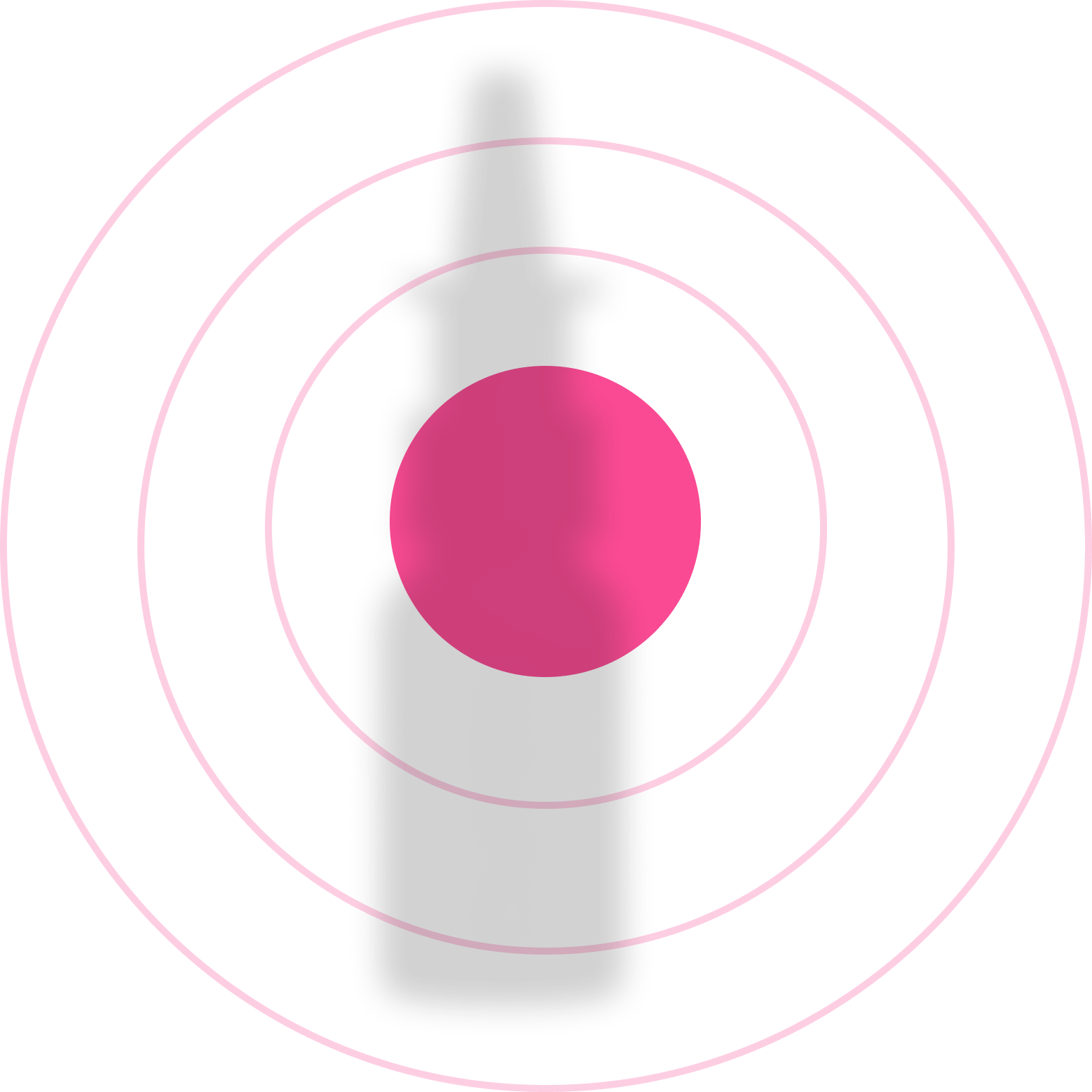
A modern clinic for at-home treatments
(857) 240-1080
Take Quiz
Get started with the most affordable immunotherapy for only $49 $9.99
Discount applied at checkout.


Curex does not treat this allergen










Dr. Chet Tharpe, M.D..
Updated May 3, 2025
One of the first signs of Bayberry pollen allergy is frequent sneezing. The immune system treats the pollen as an invader causing the nasal route to inflame and induce sneezing.
The reaction to the pollen tends to produce a runny or stuffy nose. The membranes in the nose might get swollen resulting in congestion.
Pollen can also cause inflammation in eyes, inducing redness, itching, and watering. This condition is often referred to as allergic conjunctivitis.
The Bayberry pollen can cause difficulty in breathing due to the inflammation in the airways, often creating a whistling sound while breathing which is known as wheezing.
Exposure to the pollen may cause a person to outbreak in hives or urticaria. These are red, itchy rashes on the skin that appear as a symptom of the allergy.
General fatigue and feeling worn out is a symptom that is commonly experienced as the body's immune system fights against what it perceives as a threat.
Recognize your symptoms?

If you believe you might have a specific allergy to Bayberry pollen, you could follow these steps to help confirm your concerns.
Identify Common Allergy Symptoms
Assess Your Allergy Timing
Undergo Allergy Testing
It's important to visit your doctor or allergist to undergo these tests and get a proper diagnosis. They can also prescribe you a suitable treatment plan to manage your symptoms.



.jpg)
Don't wait until next season. Start now and enjoy a life free from allergies!
Am I eligible?




The most effective way to prevent Bayberry pollen allergy is to avoid exposure to the pollen whenever possible. This can be achieved by staying indoors when pollen counts are high, closing windows, and using air purifiers to filter pollen from the air. Also, consider wearing sunglasses and a mask when going outside during the pollen season.
Ensure your living spaces are clean and free from accumulated dust and pollen. Regular vacuuming, sweeping, and dusting can help to reduce the amount of pollen in the air, as can washing bedding and upholstery regularly. Additionally, clean air ducts and change air filters frequently to prevent pollen from circulating in your home.
Consider taking over-the-counter antihistamines or nasal sprays. These medicines can help to reduce the body's allergic response to pollen, preventing or reducing symptoms. Always consult with your healthcare provider before starting any new medication.
Pollen counts tend to be highest during the early morning and later afternoon to evening. Try to plan your outdoor activities outside these hours. Activities like gardening, walking, or biking can expose you to higher levels of pollen, so consider doing these activities indoor or in a low-pollen environment.
Ready to forget about allergy hassles? Try immunotherapy!

Review your allergy test results with a Curex allergist.

Bayberry Pollen's Impact on Indoor Air Quality
Possible Cross-Reactivity with Foods
Bayberry Pollen Allergenicity
Have questions left?
Take our quiz and get a personalized consultation!

Treatment prescribed
by clinician


Clinicaly made allergen extracts are customized for your allergies


Your immune system gets desensitized to allergens, giving you long-term relief.
Get started with the most affordable immunotherapy for only $49 $9.99
Discount applied at checkout.


Expert guide on Bayberry pollen allergy: symptoms, avoidance tips, diet advice, and US growth insights.










Dr. Chet Tharpe, M.D..
Updated July 9, 2025
gr.
Carbohydrates
gr.
Sugar
gr.
Fats
gr.
Proteins
Calories
One of the first signs of Bayberry pollen allergy is frequent sneezing. The immune system treats the pollen as an invader causing the nasal route to inflame and induce sneezing.
The reaction to the pollen tends to produce a runny or stuffy nose. The membranes in the nose might get swollen resulting in congestion.
Pollen can also cause inflammation in eyes, inducing redness, itching, and watering. This condition is often referred to as allergic conjunctivitis.
The Bayberry pollen can cause difficulty in breathing due to the inflammation in the airways, often creating a whistling sound while breathing which is known as wheezing.
Exposure to the pollen may cause a person to outbreak in hives or urticaria. These are red, itchy rashes on the skin that appear as a symptom of the allergy.
General fatigue and feeling worn out is a symptom that is commonly experienced as the body's immune system fights against what it perceives as a threat.
Recognize your symptoms?

Bayberry pollen generally becomes airborne during the fall season, typically starting in late September and lasting until the end of October. The exact start and end dates might shift year to year, based on specific weather conditions. During this period, Bayberry plants release a significant amount of pollen, which can trigger allergic reactions in susceptible individuals.
Significant Growth Periods


.jpg)
Don't wait until next season. Start now and enjoy a life free from allergies!
Am I eligible?



Review your allergy test results with a Curex allergist.

Treatment prescribed
by clinician


Clinicaly made allergen extracts are customized for your allergies


Your immune system gets desensitized to allergens, giving you long-term relief.
Get started with the most affordable immunotherapy for only $49 $9.99
Discount applied at checkout.


Expert guide on Bayberry pollen allergy: symptoms, avoidance tips, diet advice, and US growth insights.










Dr. Chet Tharpe, M.D..
Updated July 9, 2025

The reaction to the pollen tends to produce a runny or stuffy nose. The membranes in the nose might get swollen resulting in congestion.

Bayberry pollen generally becomes airborne during the fall season, typically starting in late September and lasting until the end of October. The exact start and end dates might shift year to year, based on specific weather conditions. During this period, Bayberry plants release a significant amount of pollen, which can trigger allergic reactions in susceptible individuals.
Significant Growth Periods
One of the first signs of Bayberry pollen allergy is frequent sneezing. The immune system treats the pollen as an invader causing the nasal route to inflame and induce sneezing.



Don't wait until next season. Start now and enjoy a life free from allergies!
Am I eligible?



Review your allergy test results with a Curex allergist.

Treatment prescribed
by clinician


Clinicaly made allergen extracts are customized for your allergies


Your immune system gets desensitized to allergens, giving you long-term relief.

Bayberry pollen generally becomes airborne during the fall season, typically starting in late September and lasting until the end of October. The exact start and end dates might shift year to year, based on specific weather conditions. During this period, Bayberry plants release a significant amount of pollen, which can trigger allergic reactions in susceptible individuals.
Significant Growth Periods
It’s a physician-prescribed, custom-compounded formula designed to target all your nasal symptoms at once — congestion, runny nose, post-nasal drip, sneezing, and more.

Formulated by doctors and pharmacologists and backed by clinical research, Quickie combines five powerful ingredients into one easy spray.

Typical prescription may include the following ingredients: Azelastine HCL 0.15%, Mometasone Furoate 0.05%, Oxymetazoline HCL 0.0125%, Ipratroprium 0.06%, Sodium Hyaluronate 0.04%.
Straight to the source. That’s Curex


Quickie is a compounded prescription medication, prepared by a licensed pharmacy. It is not reviewed or approved by the FDA. It is prepared based on your provider’s evaluation of your symptoms and needs. Individual results may vary.

Lauren S.
No longer having to go the doctor's office a few times a week for painful shots.
Tony P.
I have done allergy shots in the past but found it pretty inconvenient to go every week. I really like the ease as compared with physically going to the doctors office.

Robert S.
The treatment is much less expensive than a course of allergy shots at a doctor's office and eliminates numerous trips to the doctor's and all the waiting time.
Janie L.
My seasonal allergies were much less severe than years prior. Most importantly, the convenience of taking drops in my own home is unbeatable.

Most patients feel relief within 15 minutes. We have both short-term relief ingredients as well as longer-term relief to keep you feeling better, longer. Some say it’s like turning off their allergies.
Sneezing runny nose, nasal congestion, post-nasal drip, sinus pressure, itchy nose. Great for outdoor allergies, indoor dust, or when pollen spikes unexpectedly.
No, this formula uses a microdose of oxymetazoline, balanced with anti-inflammatory and moisturizing ingredients to reduce the risk of rebound congestion. Clinical studies over the last decade show that when oxymetazoline is combined with a corticosteroid, it can be used safely over the long term without causing rebound symptoms.
Quickie Spray combines up to five prescription-strength ingredients into a single, personalized formula — targeting multiple symptoms like congestion, post-nasal drip, and inflammation. OTC sprays typically address just one symptom and lack the synergy of a customized blend.
Some ingredients like azelastine may cause a slight taste, but many patients find it milder than traditional OTC sprays. Proper spray technique (head forward, not tilted back) helps minimize drip.We also offer an alternative formulation with olopatadine, which has a gentler taste profile and may be preferred by taste-sensitive patients.
Quickie is designed to replace most other allergy medications. But it is designed to compliment allergy immunotherapy for long-term relief. If you’re currently taking other antihistamines or nasal sprays, tell your Curex provider, so we can adjust your formula to avoid overlap or interactions.
No, Quickie is a personalized compounded prescription prepared by licensed U.S. pharmacies based on your doctor’s evaluation. Compounded medications are not FDA-approved as commercial products, but they are regulated under federal and state pharmacy laws.
Possible side effects include nasal dryness, mild irritation, or occasional nosebleeds. These are typically mild and manageable. Let your Curex provider know about any bothersome or serious effects, so we can fine-tune your prescription if needed.
Quickie is safe for daily use, especially during the first 3–6 months of allergy immunotherapy, when symptoms are still active. Your Curex provider may adjust your dose or frequency as your immune system builds tolerance.
Quickie is designed to be non-sedating, so you can use it before work, school, or exercise without feeling groggy or foggy. In rare cases where drowsiness is reported, let your Curex provider know—we can easily adjust the formula to better suit your needs.
Yes, Quickie Spray can be prescribed for children aged 6 and up, based on your provider’s clinical evaluation.
Follow the instructions from your Curex provider.Most patients are advised to use one spray per nostril, twice daily — morning and evening — for consistent relief.